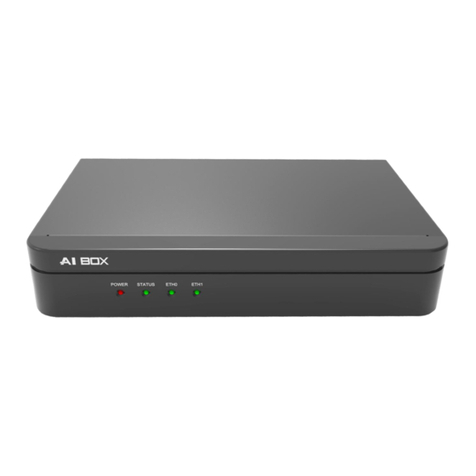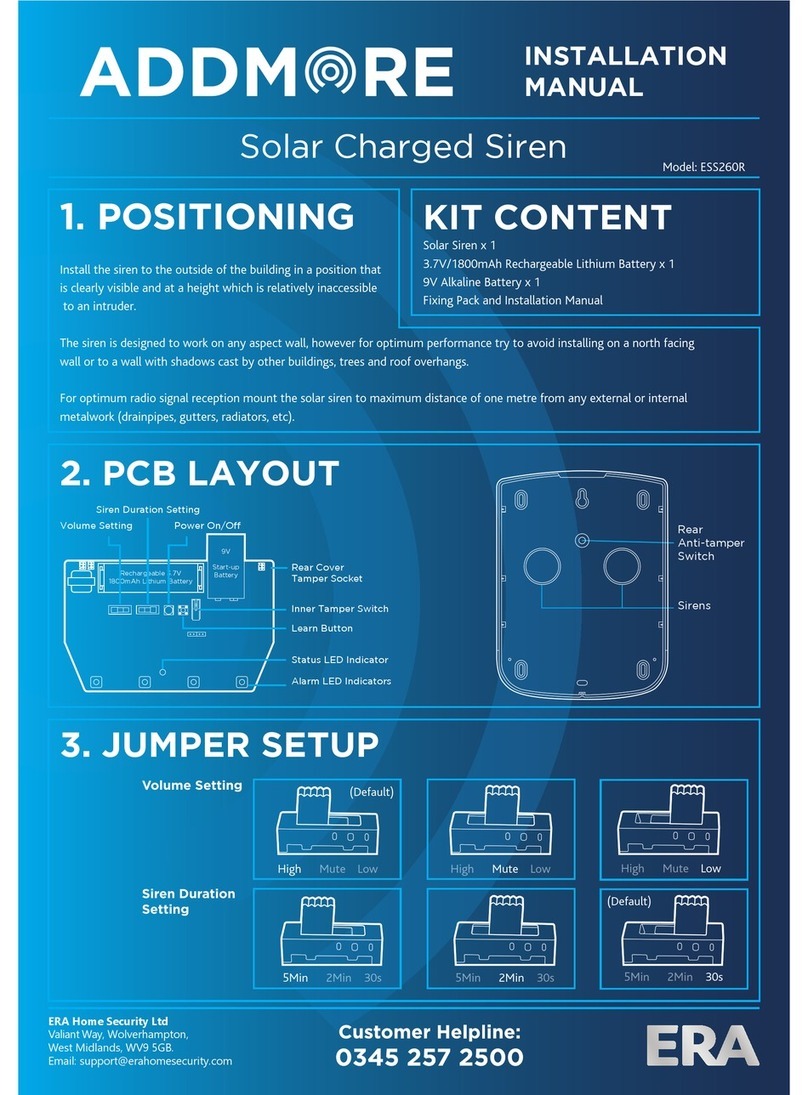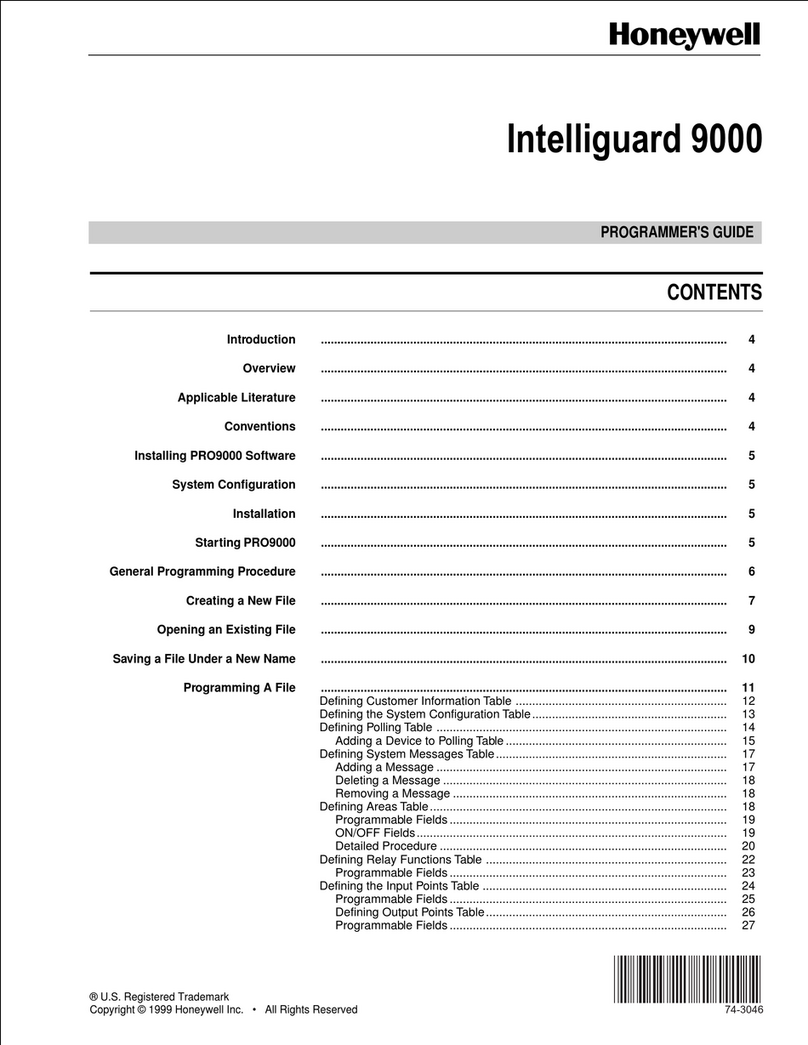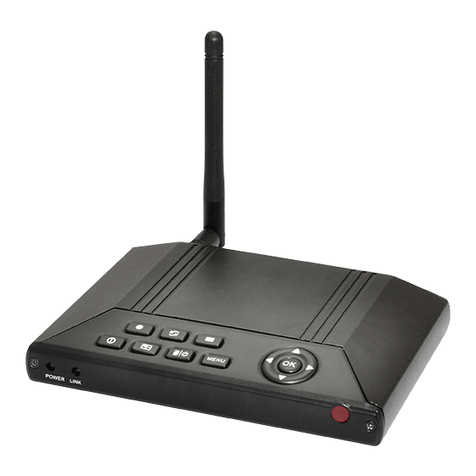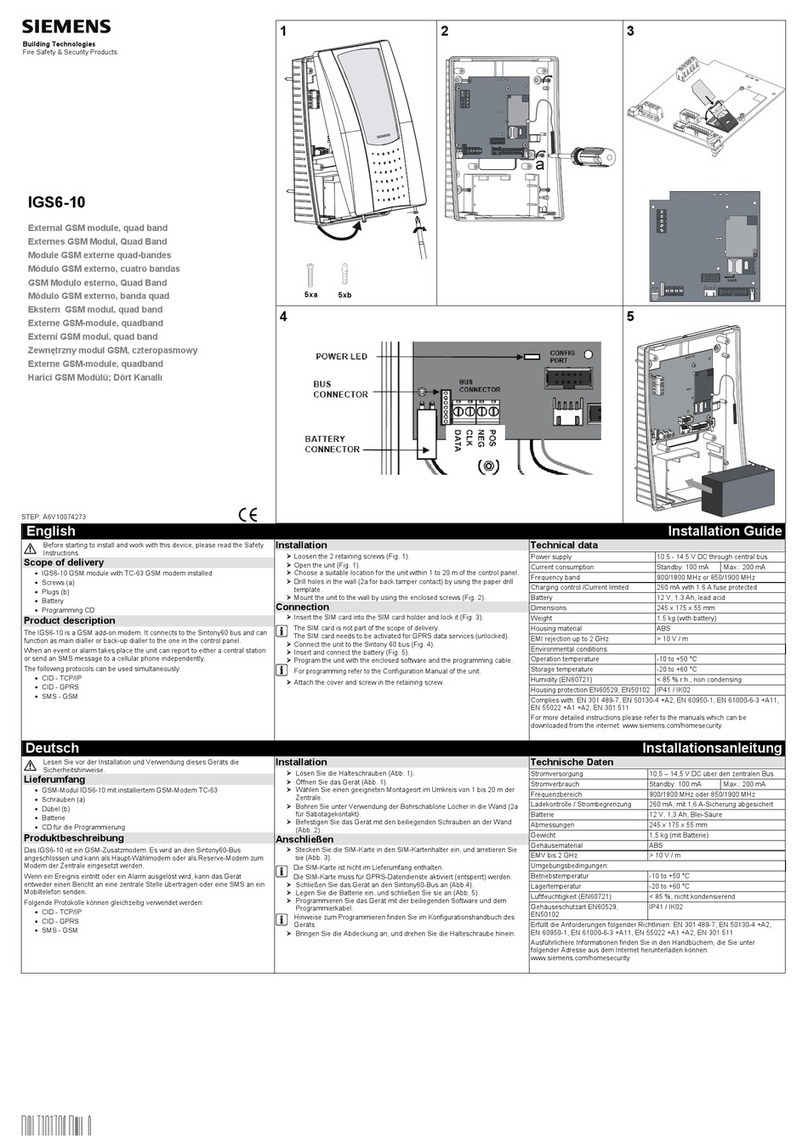Firedland MA5 User manual

Kit Contents:
1 x PIR Alarm Unit and Wall
Mounting Bracket
1 x Fixings Pack
1 x Instruction Leaflet
1 x Window Sticker
Tools and Equipment Required:
No.0 Philips Screwdriver
No.1 Philips Screwdriver
Drill and 6.5mm Masonry Drill Bit
3 x 1.5V AAA (LR03) Alkaline
Batteries for PIR Alarm Unit
SAFETY
Always follow the manufacturers
advice when using power tools;
steps, ladders etc. and wear
suitable protective equipment
(e.g. safety goggles) when
drilling holes etc.
Before drilling holes in walls,
check for hidden cables and
pipes, the use of a cable/pipe
locater may be advisable if in
doubt.
The use of ear protection is
advisable when working in close
proximity to the Siren due to the
high sound level produced by
this device.
These instructions should be retained in a safe place for future reference.
MA5 - Motion Alarm
Installation and Operating Instructions

INTRODUCTION
The Alarm can be either wall
mounted using the bracket
supplied or used freestanding for
portable use.
The Alarm is operated using a 4
digit User Access Code with the
keypad on the front of the alarm.
Passive Infra-Red (PIR) detectors
are designed to detect movement
in an area by detecting changes
in infra-red radiation levels
caused for example when a
person/animal moves within the
devices field of vision.
The system has 2 operating
modes: ALARM and CHIME.
Chime Mode is a low security
feature that will produce a door-
chime sound when the alarm is
triggered. In Alarm Mode the
device will produce a constant
high volume alarm sound when
triggered.
POSITIONING THE
PIR ALARM UNIT
The recommended position for a
PIR Movement Detector is in the
corner of a room mounted at a
height of approx. 2m. At this
height, the detector will have a
range of up to 6m with a field of
view of 110°.
When considering and deciding
upon the mounting position for
the detector the following points
should be considered:
Fixing
Screw
PIR Movement
Sensor
Wall Mounting
Bracket
Siren
LED
Indicator
Keypad

1) Where possible, mount the
detector in the corner of the
room where the logical path of
an intruder would be across
the device. PIR detectors
respond more effectively to
movement across the device
than to movement directly
towards it.
2) Do not position the unit facing
a window or where it is in
direct sunlight. PIR Detectors
are not suitable for use in
conservatories.
3) Do not position the unit where
it is exposed to draughts.
4) Do not position the unit
directly above a strong heat
source.
5) Do not position the unit where
it is subject to excessive
vibration.
INSTALLATION
1) Hold the mounting bracket in
position on the wall and mark
the position of the two fixing
holes.
2) Fix the mounting bracket to
the wall using the fixing screws
and wall plugs supplied, (a
6.5mm hole will be required for
the wall plugs).
Note: The wall plugs supplied
are not suitable for use in
plasterboard walls.
3) Undo the battery cover fixing
screw and remove the cover.
4) Insert 3 x AAA (LR03) Alkaline
batteries noting the correct
polarity shown inside the
battery compartment.
5) Immediately the batteries are
inserted the indicator LED on
the front of the Alarm will flash
for 15s.
During this period you should
enter a 4 digit User Access

Code. The alarm will beep
when each digit is entered.
When the 4th digit is entered
the alarm will beep twice to
confirm the new code has
been accepted.
If the LED stops flashing
before the code is entered or
the alarm does not produce
the confirmation beep start
the process again.
6) Select the required operating
mode for the alarm, (i.e.
ALARM or CHIME mode)
using the slide switch in the
battery compartment.
7) Replace the battery cover and
fixing screw.
8) Clip the PIR Alarm Unit onto
the mounting bracket and
adjust the unit until it is at the
required angle and direction.
SYSTEM OPERATION
Changing the 4 digit User
Access Code: (default setting:
1234)
1) First ensure the system is
Disarmed and then remove
the Alarm from the wall
bracket.
2) Undo the Battery Cover Fixing
screw and remove the battery
cover.
3) Press the LEARN button in
the battery compartment.
4) The indicator LED on the front
of the Alarm will flash for 15s.
During this period you must
enter your new 4 digit User
Access Code. The alarm will
beep when each digit is
entered. When the 4th digit is
entered the alarm will beep
twice to confirm the new code
has been accepted.
If the LED stops flashing
before the code is entered or
the alarm does not produce

the confirmation beep start
the process again.
5) Refit the battery cover and
replace the fixing screw.
6) Refit the Alarm to the
mounting bracket.
Operating in the Chime Mode:
To activate CHIME mode the
mode selector switch in the
battery compartment must first
be set to the CHIME position.
Enter the 4 digit User Access
Code. The alarm will beep as
each digit is entered. A door-
chime sound will indicate that
the User Access Code is correct
and the system has armed.
Note: A double beep will be
produced if the User Access
Code has been entered
incorrectly.
The alarm will produce a door-
chime sound each time the PIR
senses movement.
Operating in the Alarm Mode:
To activate ALARM mode the
mode selector switch in the
battery compartment must first
be set to the ALARM position.
Enter the 4 digit User Access
Code. The alarm will beep as
each digit is entered. The LED
indicator will start flashing, the
flashing will continue until the
45s exit-delay expires, at which
point the Alarm will be armed.
The exit-delay allows time for
you to leave the protected area
without triggering the alarm.
Note: A double beep will be
produced if the User Access Code
has been entered incorrectly.
If movement is detected while
the system is armed then the
alarm will beep and the LED
indicator will start flashing. This
continues until the 30s entry-
delay expires at which point the
siren will activate. The entry-
delay allows time for you to
DISARM the alarm before the
siren activates.

The siren will continue for 30s
before stopping. Any further
triggering of the alarm by
movement in front of the PIR will
immediately re-activate the siren
for a further 30s period.
To stop the Alarm enter the 4
digit User Access Code.
Disarming the Alarm / Exiting
Chime Mode:
Enter the 4 digit User Access
Code. The alarm will beep as
each digit is entered. A single
beep will indicate that the User
Access Code is correct and the
system has disarmed.
Note: A double beep will be
produced if the User Access Code
has been entered incorrectly.
Low Battery Warning:
A low battery level is indicated by
the LED indicator continuously
flashing every 1.5s, (except during
the entry/exit delay period).
TESTING
It is recommended that the
system is tested immediately
after installation and at regular
intervals not exceeding 1 month.
To test the system, ARM the
alarm. After allowing the 45s
exit-delay to expire trigger
the alarm by walking in front
of the PIR. After the 30s entry
delay has expired the siren will
activate.
DISARM the alarm to stop the
siren.
Note: A cloth can be used to
cover the siren and reduce the
sound output of the alarm during
testing.
TROUBLE SHOOTING
Alarm Unit Not Operating
●Batteries low, flat, missing or
incorrectly fitted.
●Incorrect User Access Code
entered.

PIR Causing False Alarms
●PIR Badly positioned, (e.g. in
direct sunlight, draughts,
above a radiator etc.).
MAINTENANCE
The product may be cleaned with
a soft damp cloth and then wiped
dry. Do not use abrasive, solvent
based or aerosol cleaners as this
may damage and/or discolour
the product. Do not allow water
to enter or attempt to clean
inside the unit.
Replacement Batteries:
Remove batteries before storing
the Alarm for extended periods.
Do not allow batteries to
corrode and leak as this may
cause permanent damage to the
product.
Do not mix new and old batteries
or different types of batteries.
Do not fit rechargeable batteries.
Replacement 3 x AAA (LR03)
Batteries: Alkaline Batteries
Typical Life: up to 1 year
Important: Take care to insert
the batteries with the correct
polarity as shown inside the
battery compartments.
Note: Disconnecting and
changing the batteries may
cause the User Access Code to
reset to the system default,
(1234). After changing batteries
always check (and if
necessary reprogram) to
ensure the Access Code is still
set to your own code.
At the end of their
useful life the
batteries should be
disposed of via a
suitable Recycling
Centre. Do not dispose of with
your normal household waste. DO
NOT BURN.

45377PL Ed.1
Friedland, Novar Electrical Devices and Systems
The Arnold Centre, Paycocke Road, Basildon, Essex. SS14 3EA
www.friedlandsecurity.com
GUARANTEE
Novar ED&S undertakes to replace or repair at its discretion goods
(excluding non rechargeable batteries) should they become defective
within 2 years solely as a result of faulty materials and workmanship.
Understandably if the product has not been installed, operated or
maintained in accordance with the instructions, has not been used
appropriately or if any attempt has been made to rectify, dismantle or
alter the product in any way the guarantee will be invalidated.
The guarantee states Novar ED&S entire liability. It does not extend
to cover consequential loss or damage or installation costs arising
from the defective product. This guarantee does not in any way
affect the statutory or other rights of a consumer and applies to
products installed within the UK and Eire only.
If an item develops a fault within the first year, it should be returned to
the point of sale with:
1) Proof of purchase.
2) A full description of the fault.
3) All relevant batteries (disconnected).
In the second year it should be returned direct to Friedland Technical
Sales Services Department at the address shown below.
Friedland is a trademark of Novar ED&S.
HELPLINE
If you have any problems with your
alarm, please call the Helpline on:
01268 563273
(Lines open 9.00am to 5.00pm, Monday to Friday)
Table of contents
Popular Security System manuals by other brands
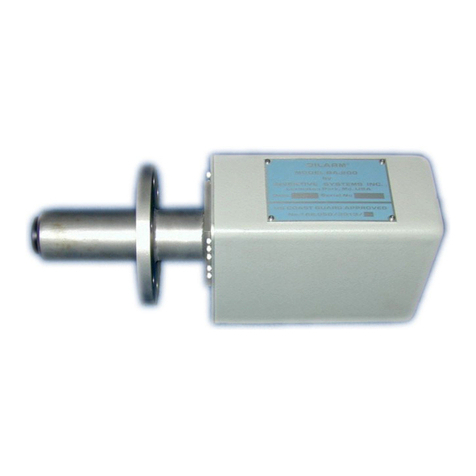
INVENTIVE SYSTEMS
INVENTIVE SYSTEMS BA-200 Technical manual

Safety Vision
Safety Vision PatrolRecorder 4C installation guide
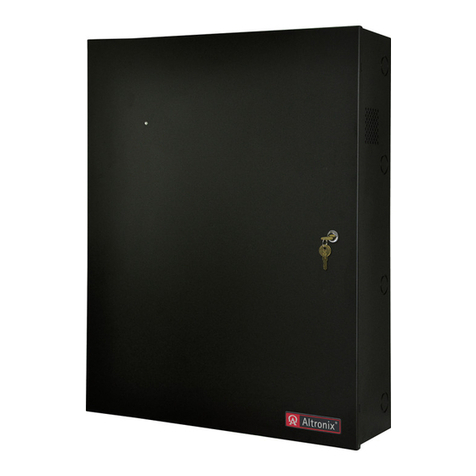
Altronix
Altronix TROVE T3SSK7528 installation guide
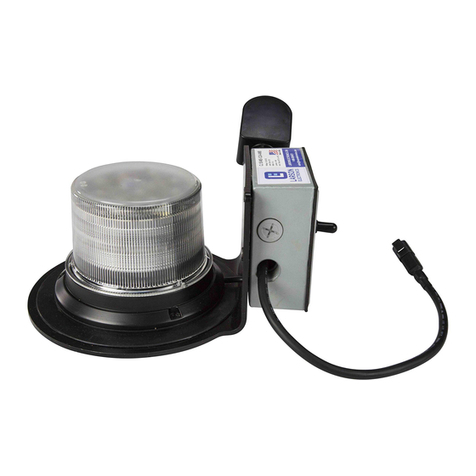
Larson Electronics
Larson Electronics CL1B-MS-1227 quick start guide
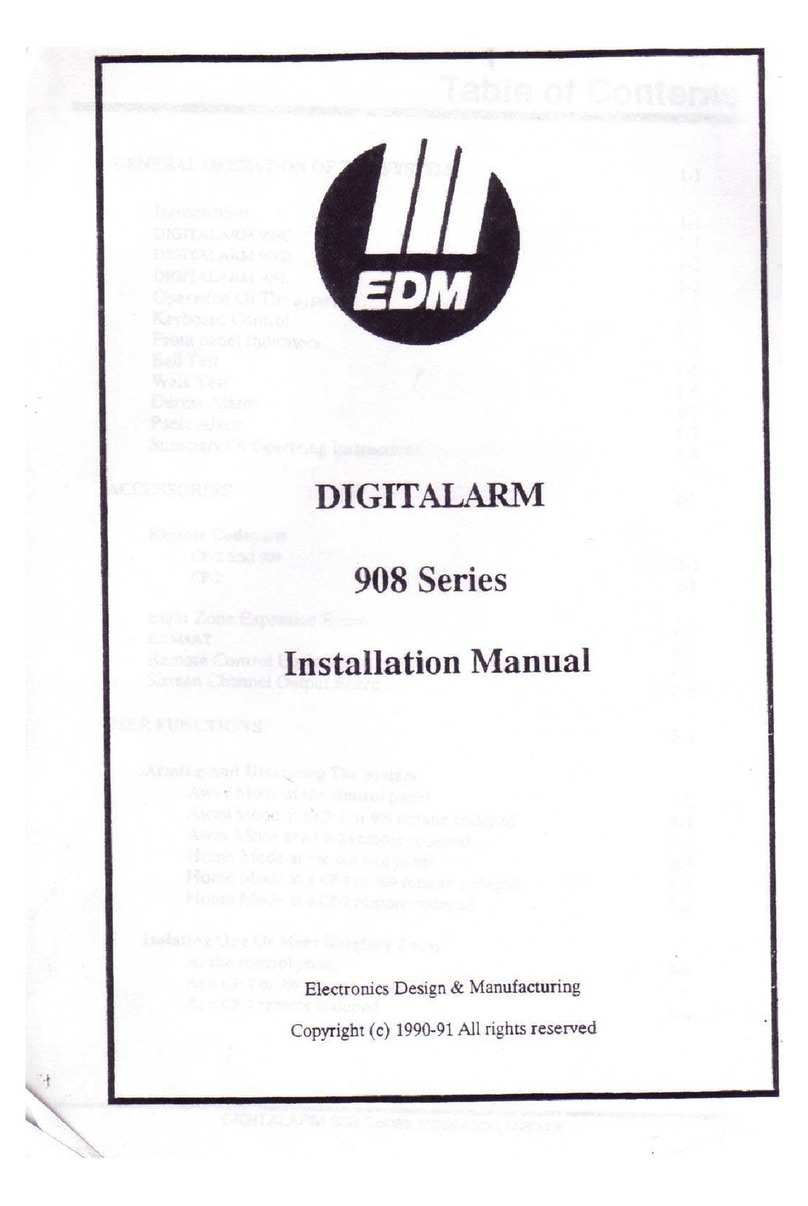
EDM
EDM DIGITALARM 908C installation manual
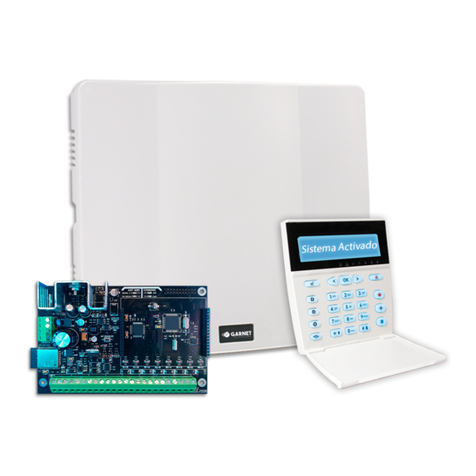
Garnet
Garnet PC-900G Installer manual
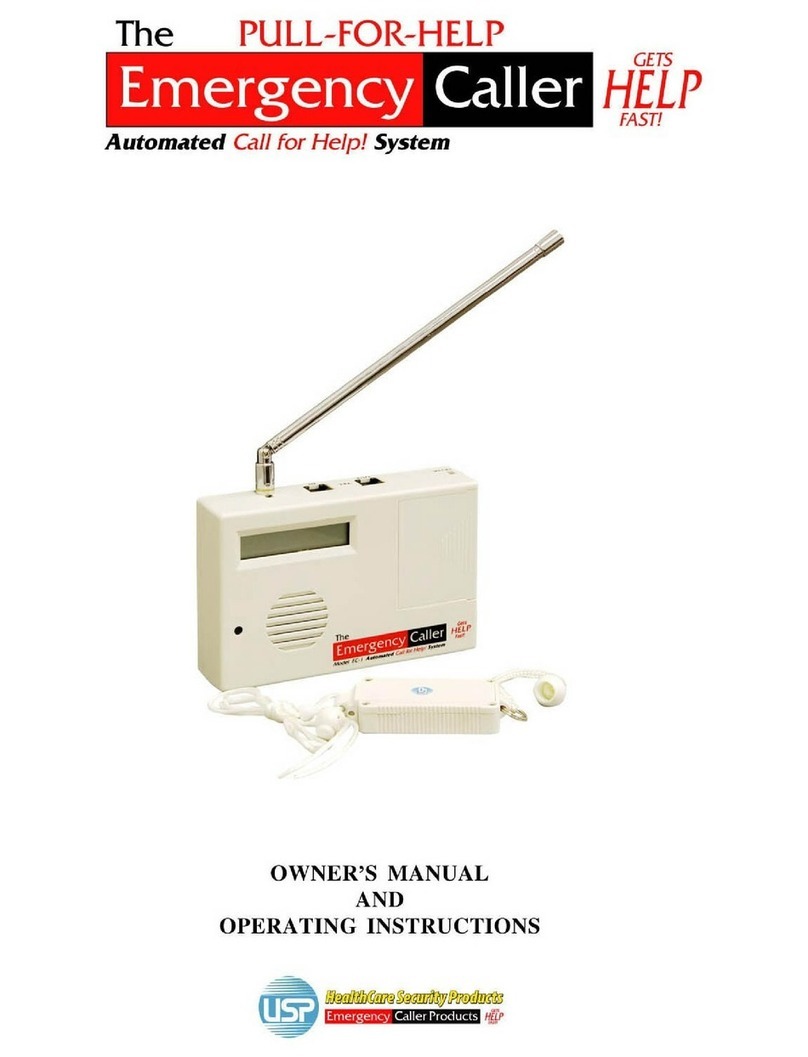
USP/Emergency Caller Products
USP/Emergency Caller Products EC-1 Owner's Manual and Operating Instructions
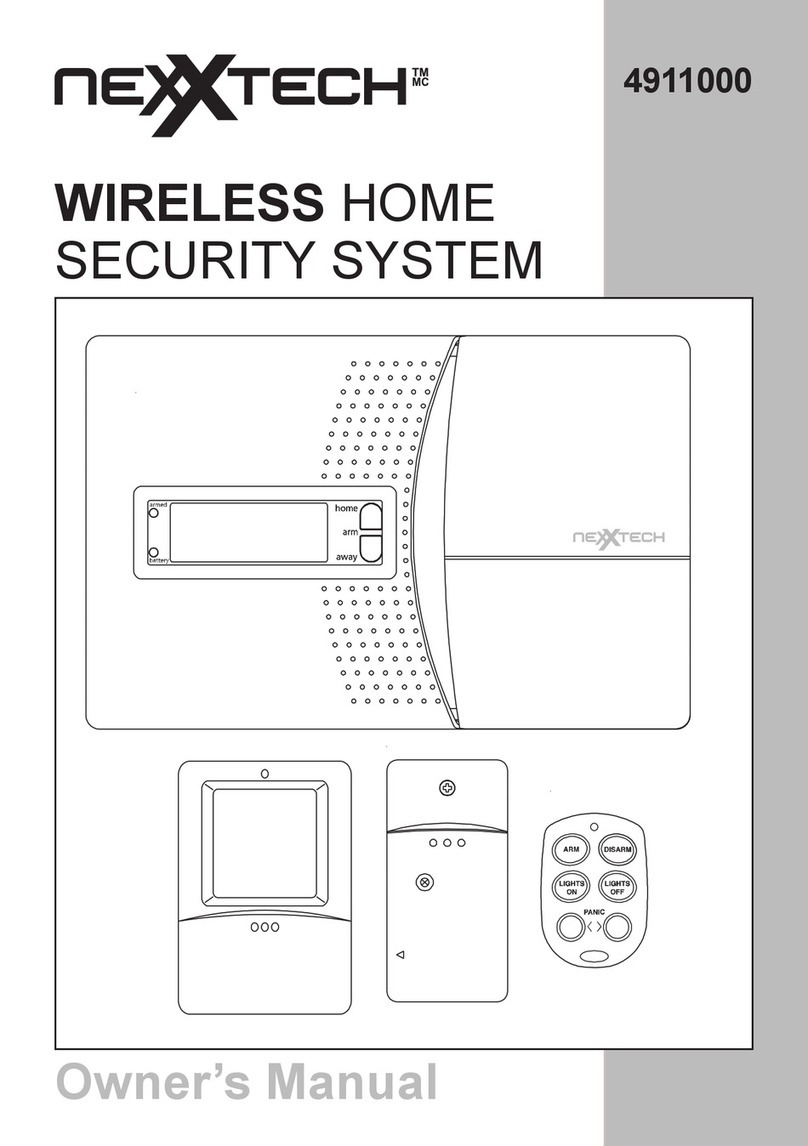
NexxTech
NexxTech 49110000 owner's manual
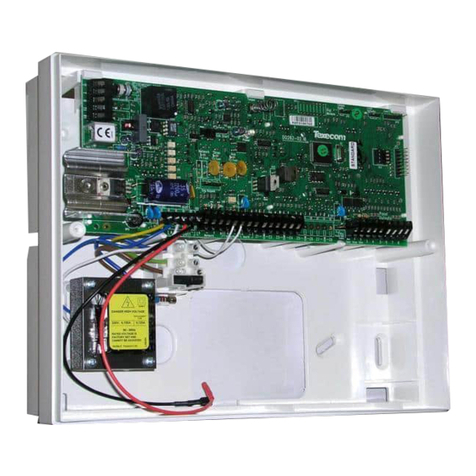
Texecom
Texecom Premier 412 Programming guide
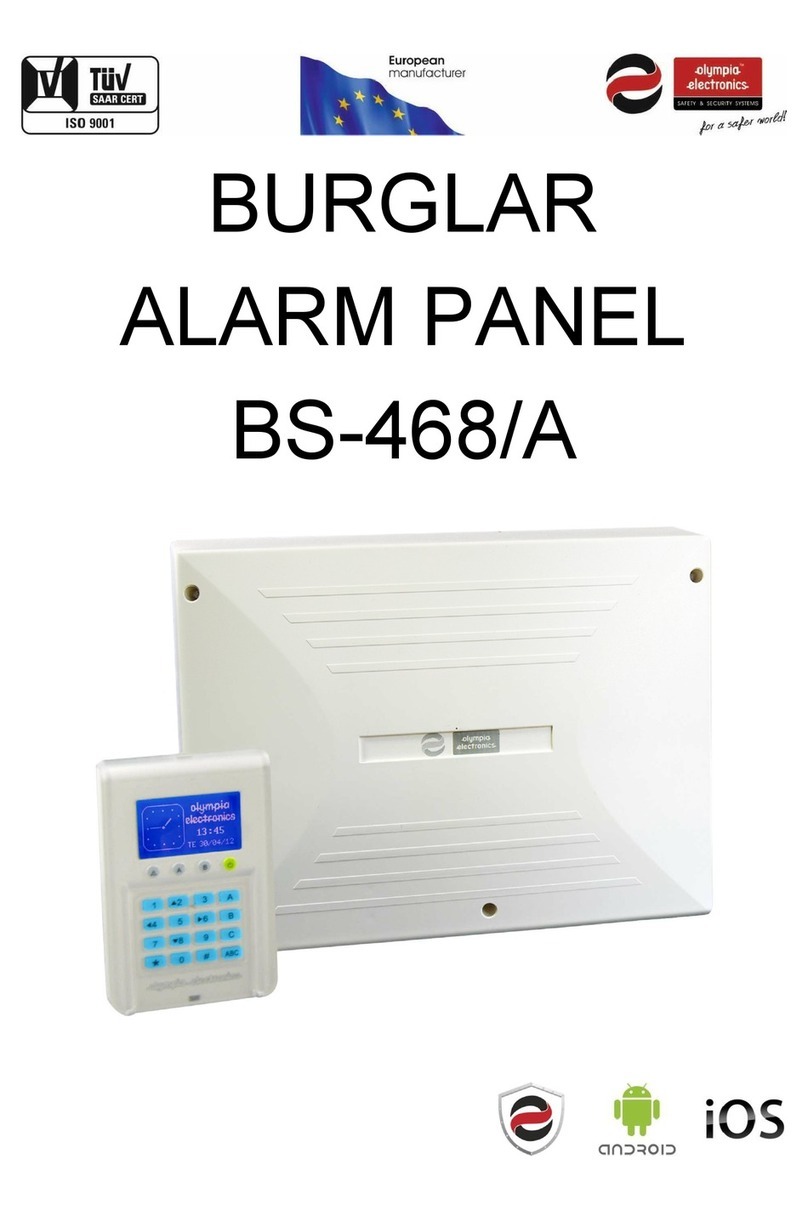
olympia electronics
olympia electronics BS-468/A manual

Magos
Magos SR-500 user manual
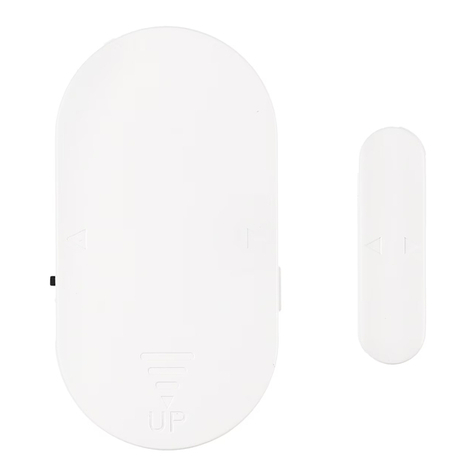
Clas Ohlson
Clas Ohlson MC-03 instruction manual
